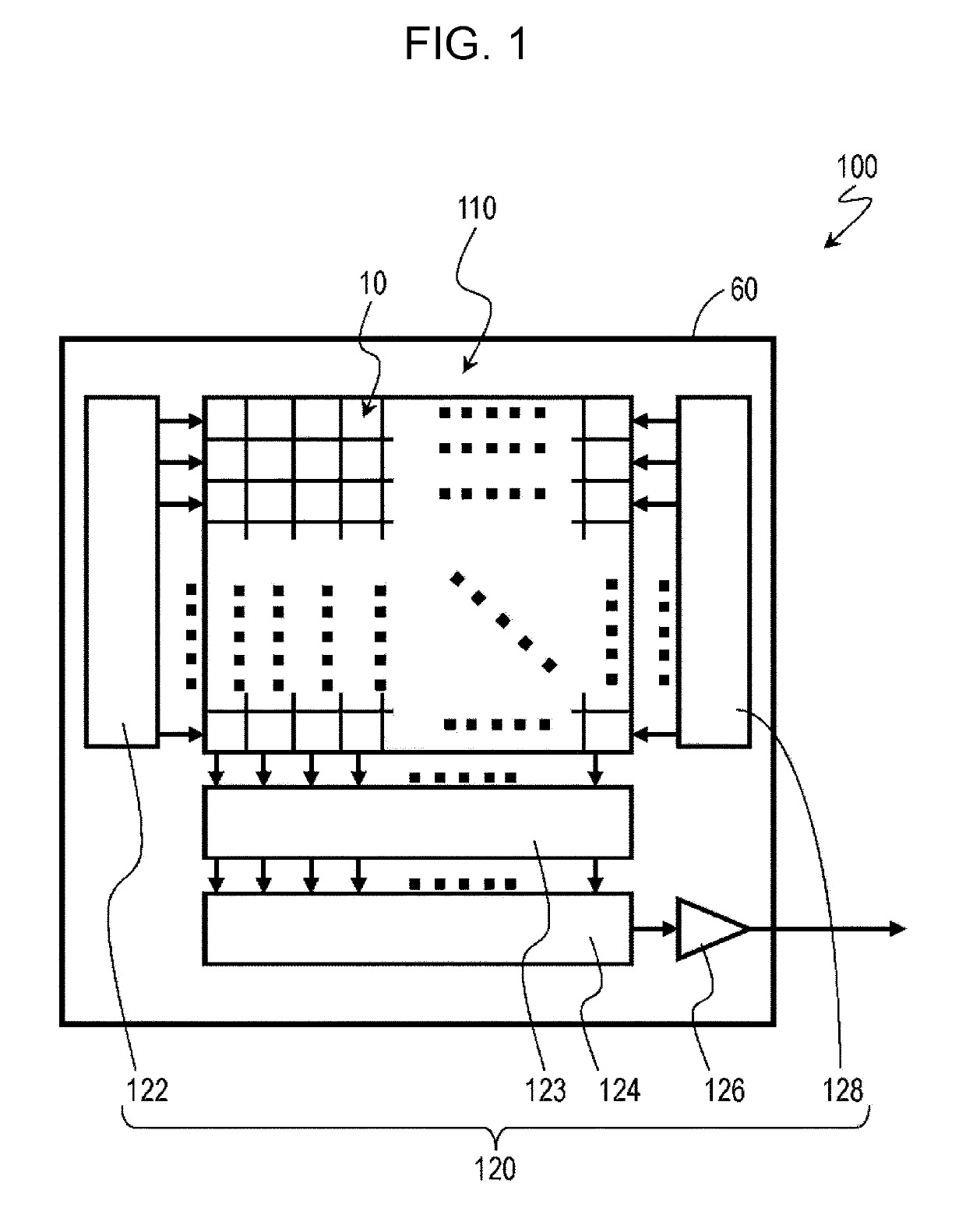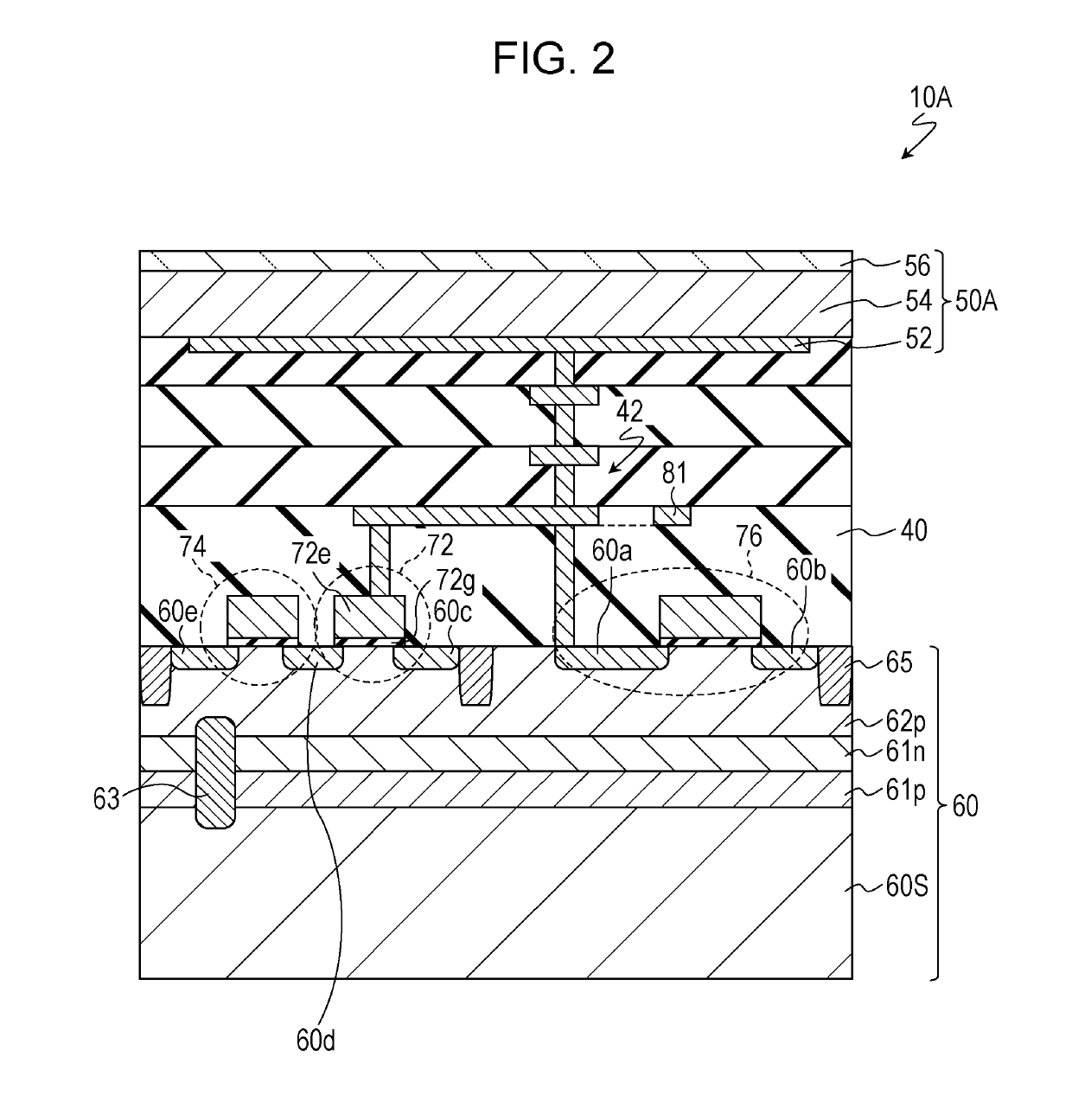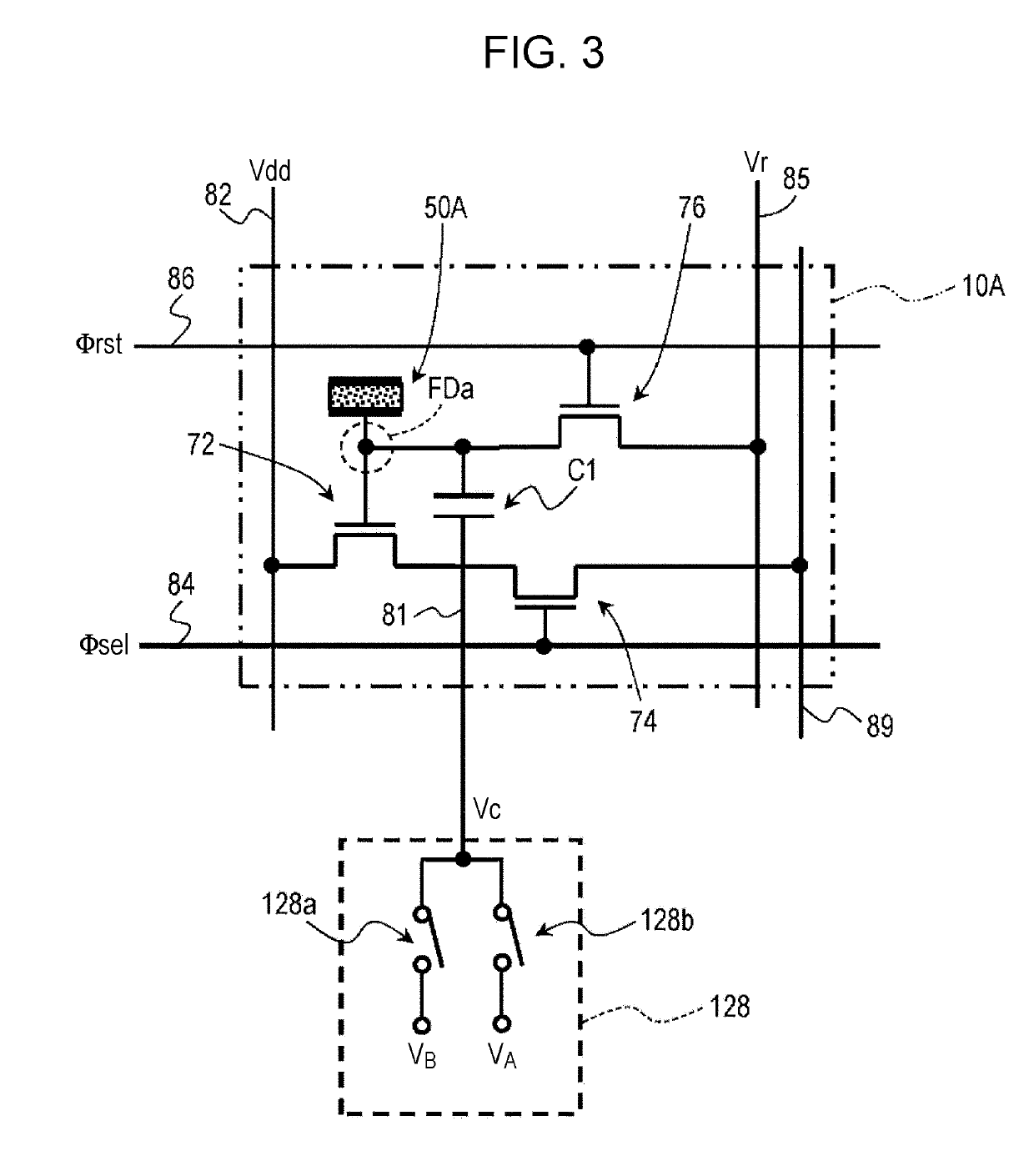Imaging device
a technology of imaging device and irradiation control, which is applied in the direction of irradiation control device, television system, transistor, etc., can solve problems such as image deterioration, and achieve the effect of reducing noise and reducing leakage curren
- Summary
- Abstract
- Description
- Claims
- Application Information
AI Technical Summary
Benefits of technology
Problems solved by technology
Method used
Image
Examples
first embodiment
Modification of First Embodiment
[0234]The imaging device 100 in the present disclosure is not limited to a multilayer imaging device. FIG. 5 schematically illustrates another example of the circuit configuration of the pixel 10. Unlike the pixel 10A described with reference to FIG. 3, a pixel 10Ap illustrated in FIG. 5 includes a photoelectric conversion unit 50B instead of the photoelectric conversion unit 50A. The photoelectric conversion unit 50B is, for example, an embedded photodiode formed in the semiconductor substrate 60.
[0235]As illustrated in FIG. 5, the photoelectric conversion unit 50B is connected to the gate of the signal detection transistor 72 in this example. In the configuration illustrated in FIG. 5, a node FDb between the photoelectric conversion unit 50B and the signal detection transistor 72 corresponds to a charge accumulation node. In other words, a p-n junction in the embedded photodiode, which is the photoelectric conversion unit 50B, the impurity region 60...
second embodiment
Modifications of Second Embodiment
[0298]FIG. 15 illustrates an imaging device according to a modification of the second embodiment of the present disclosure. In the circuit configuration of a pixel 10Bp illustrated in FIG. 15, the photoelectric conversion unit 50A of the pixel 10B illustrated in FIG. 12 is replaced by the photoelectric conversion unit 50B.
[0299]The operation of the imaging device 100 including the pixel 10Bp may be the same, for example, as that described with reference to FIG. 14A or 14B. That is, in the first period, in which the reset transistor 76 is on, the first voltage VA may be applied to the impurity region 60b, and in the second period, which comes after the reset transistor 76 is turned off and in which the transistor 78 is off, the second voltage VB may be applied to the impurity region 60b.
[0300]With the circuit configuration illustrated in FIG. 15, as with that of the pixel 10B illustrated in FIG. 12, the potential of the node RD, which is a floating ...
third embodiment
[0322]FIGS. 19A and 19B schematically illustrate examples of the circuit configuration of a pixel included in an imaging device according to a third embodiment of the present disclosure. An imaging device 140 illustrated in FIG. 19A includes a pixel 10D. As with the circuit configuration described with reference to FIG. 3, the pixel 10D includes the signal detection transistor 72, the address transistor 74, and the reset transistor 76. In the circuit configuration of a pixel 10Dp illustrated in FIG. 19B, the photoelectric conversion unit 50A of the pixel 10D illustrated in FIG. 19A is replaced by the photoelectric conversion unit 50B.
[0323]A main difference between the pixel 10D illustrated in FIG. 19A and the pixel 10A described with reference to FIG. 3 is that, in the pixel 10D, the voltage supply circuit 128 is not connected to the node FDa and the node FDa and the address signal line 84 are electrically connected to each other through the capacitor C1. The pixel 10D has the devi...
PUM
 Login to View More
Login to View More Abstract
Description
Claims
Application Information
 Login to View More
Login to View More - R&D
- Intellectual Property
- Life Sciences
- Materials
- Tech Scout
- Unparalleled Data Quality
- Higher Quality Content
- 60% Fewer Hallucinations
Browse by: Latest US Patents, China's latest patents, Technical Efficacy Thesaurus, Application Domain, Technology Topic, Popular Technical Reports.
© 2025 PatSnap. All rights reserved.Legal|Privacy policy|Modern Slavery Act Transparency Statement|Sitemap|About US| Contact US: help@patsnap.com



